Full List of the Landlocked Countries in The World
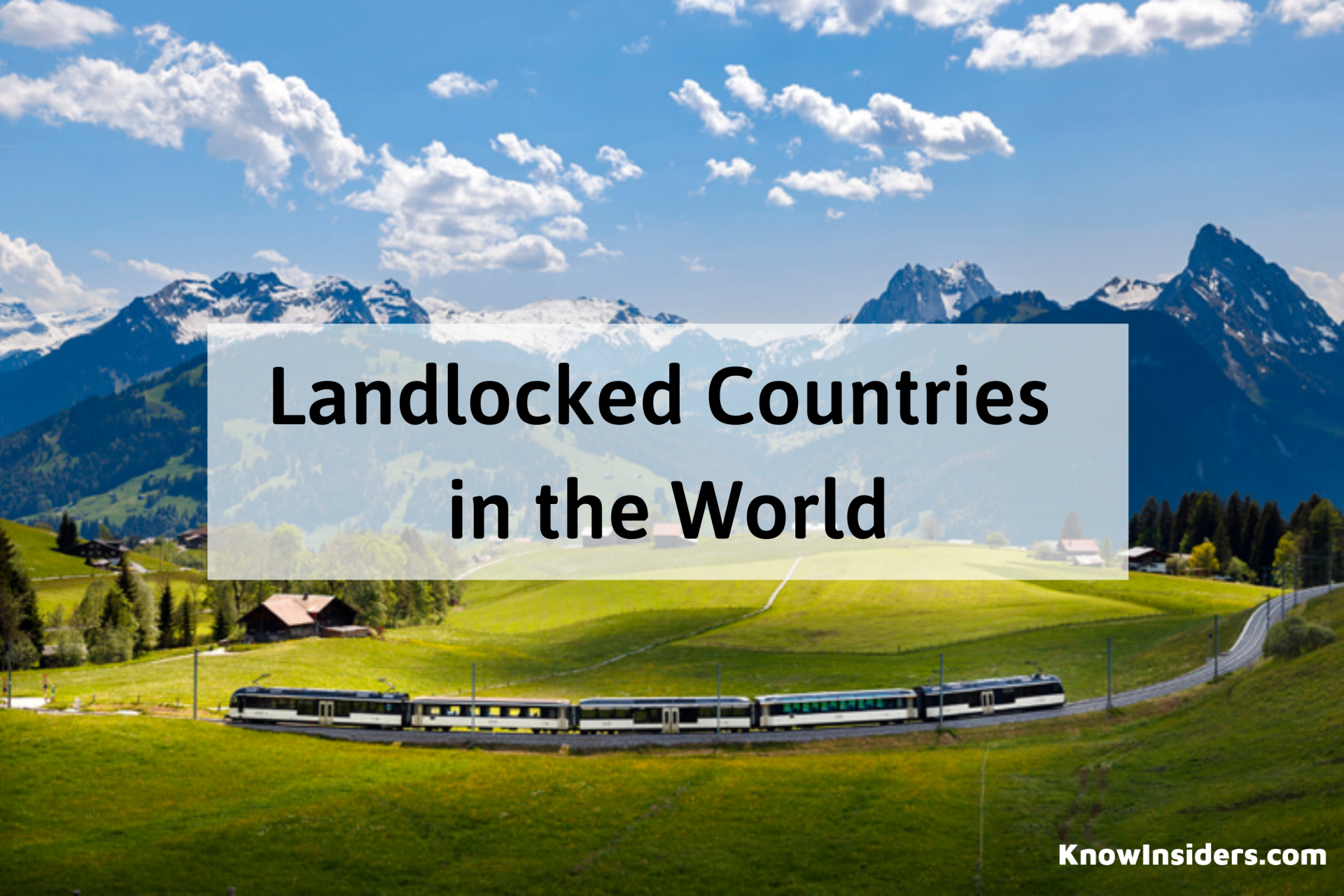 |
| Landlocked Countries in The World - Photo: KnowInsiders.com |
| Table of Contents |
What is a Landlocked Country?
A landlocked country is one that is completely surrounded by land. Some of these countries have coastlines, but only on closed seas. Rivers may run through the region, and bodies of water may exist within the country's borders, but every border is land-based, rather than water-based, like an ocean shore.
Landlocked countries account for 49 percent of the world's population. This figure is equivalent to one-fifth, or 20%, of all countries in the world.
Read more: Full List of Countries That Are Still a Monarchy by 2024
The Landlocked Countries
Let's get to know these countries a little better before we get into the specifics of life in a landlocked country. Over 40 countries in the world do not have an ocean border. Two are in South America (Bolivia and Paraguay), with the rest scattered throughout Europe, Africa, and Asia. North America and (obviously) Australia are the only continents without any landlocked nations.
Kazakhstan, located in Central Asia, is the world's largest landlocked country. The smallest is Vatican City, which is entirely contained within the boundaries of Rome. However, two landlocked nations stand out in terms of their distance from oceans. The only two landlocked nations completely encircled by other countries are Liechtenstein and Uzbekistan. They must cross an entire country before reaching a country with a coast if they want to access the ocean.
Does Being Landlocked Matter?
Because the nearest coast is in another administrative unit, a landlocked country does not have access to the ocean. Except for North America and Oceania, every continent has landlocked countries. Bolivia, Switzerland, Austria, Kazakhstan, and Mongolia are among the most significant.
Transport costs are 50% higher in landlocked countries than in non-landlocked countries. When containerized imports are taken into account, landlocked countries face costs that are 85% higher than the global average. The following issues are particularly prevalent in developing world landlocked countries:
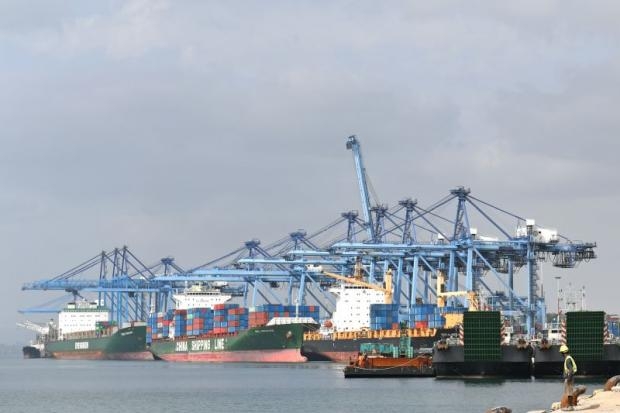 |
| Landlocked developing countries struggle with high trade costs and depend on transit countries. Photo: Dandc |
→ Difficulties in accessing international markets, as well as a reliance on neighboring countries' stability and openness to ensure consistent access to international markets.
→ Economies that rely on natural resources, such as agriculture and mining. While agriculture is mostly for subsistence, other resources have a strong export component and high transportation costs. As a result, their exports are likely to be less competitive. The average landlocked country's trade volume is less than 40% that of the average coastal country.
→ The internal transportation system is generally deficient, with a high concentration level, centered primarily on the capital.
A landlocked nation can construct transit corridors to maritime gateways in order to make up for its lack of access to international trade. Although it is occasionally possible to navigate by river, the majority of the fluvial systems that service landlocked nations are located in Europe (for instance, barges can service Switzerland and Austria). Rail corridors are the best places to locate freight services.
There are no particular connectivity obstacles preventing landlocked nations from using aviation (Zurich, for instance, is a significant hub for air travel throughout Europe). Nevertheless, because of their lower levels of development, landlocked nations are less interconnected.
Landlocked by a Single Country
Three countries are completely landlocked (i.e. surrounded on all sides by a single country). Two of these countries were established within the borders of Italy.
Lesotho, which is surrounded by South Africa, San Marino, which is surrounded by Italy, and Vatican City, which is a city-state surrounded by Rome, Italy's capital city, are among the single-country landlocked countries.
Enclave countries are those that are landlocked by a single country.
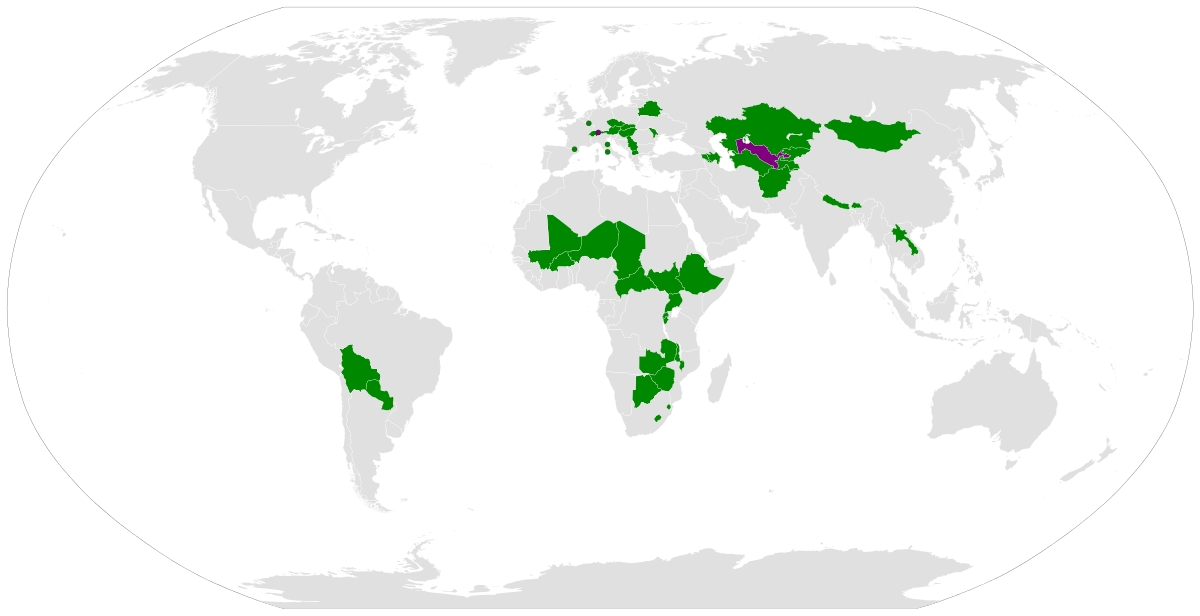 |
| Landlocked countries: 42 landlocked (green), 2 doubly landlocked (purple). Photo: Wikipedia |
Landlocked Countries That Share the Most Borders With Other Countries
A landlocked country can compensate for its lack of access to international trade by building transit corridors to maritime gateways. Most of the fluvial systems that supply landlocked countries are in Europe, though it is sometimes possible to travel by river (for example, barges can supply Switzerland and Austria). The greatest locations for freight services are along rail corridors.
Landlocked countries can use aviation without any specific connectivity issues (Zurich, for example, is an important hub for air travel throughout Europe). However, landlocked countries are less linked due to their lower levels of development.
Double-Landlocked Countries
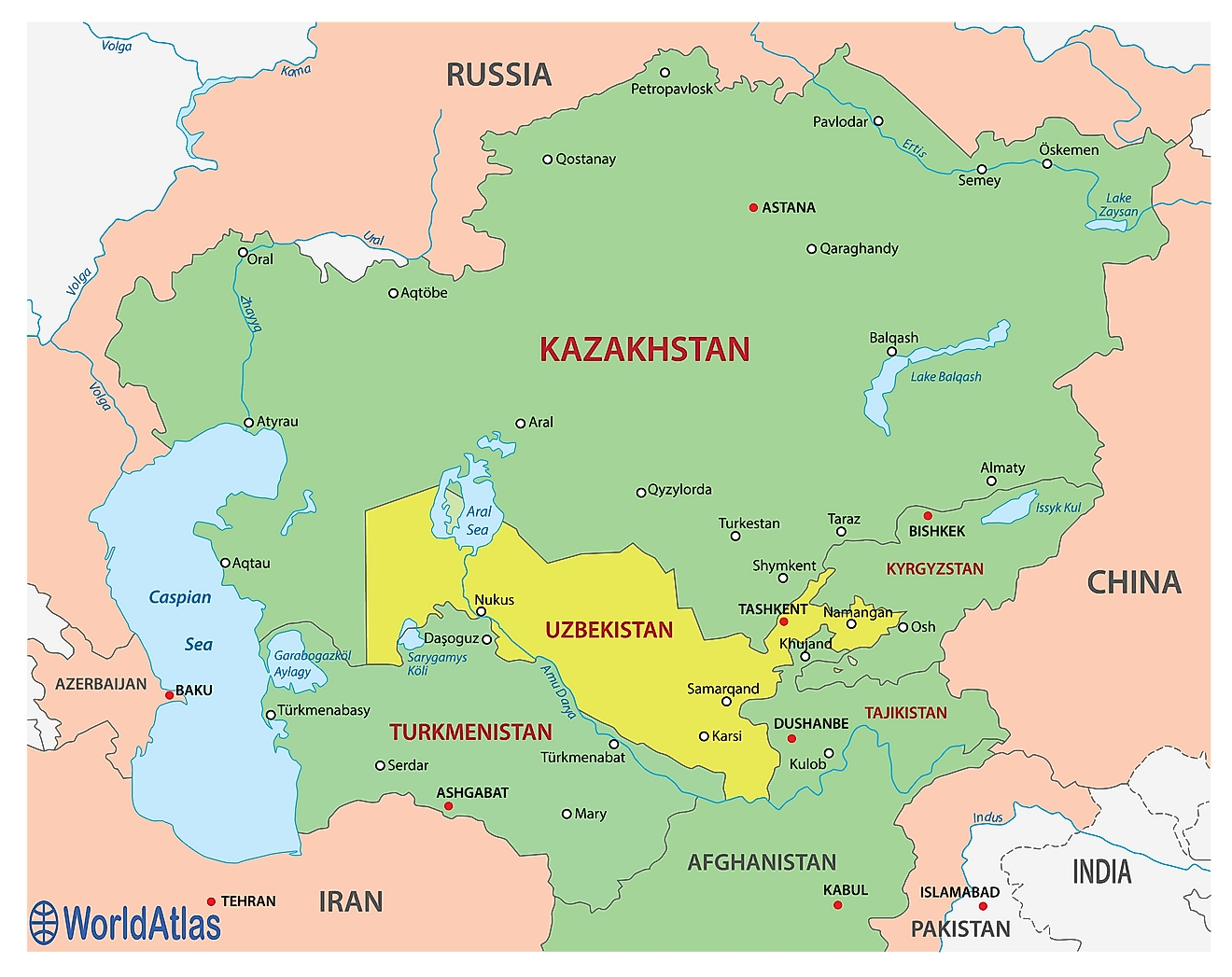 |
| Uzbekistan, one of the two double landlocked countries are surrounded by countries that are themselves landlocked. Photo: World Atlas |
Landlocked countries that are separated from the nearest ocean coast by more than one country are referred to as double-landlocked or doubly-landlocked countries.
The microstate of Liechtenstein, which is in central Europe and bordered by the landlocked nations of Austria and Switzerland, is the first double-landlocked nation.
Uzbekistan, the second country in Central Asia, is surrounded by the landlocked countries of Afghanistan, Kazakhstan, Kyrgyzstan, Tajikistan, and Turkmenistan.
South Ossetia and Transnistria are de facto states with little or no international recognition.
| The largest landlocked country is Kazakhstan in Central Asia with a land area of over 2.7 million kilometers. As the smallest sovereign state in the world, Vatican City is also the world’s smallest landlocked country. Photo: View of St. Peter’s Square in the Vatican as seen from the top of St. Peter’s Basilica, CIA, public domain. |
The Full List of Landlocked Countries Today
| Country or Territory | Area(km2) | Surrounding countries | Number of Surrounding Countries |
|---|---|---|---|
| Afghanistan | 652,230 | Iran, Turkmenistan, Uzbekistan, Tajikistan, China, Pakistan | 6 |
| Andorra | 468 | France, Spain | 2 |
| Armenia | 29,743 | Iran, Turkey, Georgia, Azerbaijan | 4 |
| Austria | 83,871 | Germany, Czech Republic, Slovakia, Hungary, Slovenia, Italy, Liechtenstein, Switzerland | 8 |
| Azerbaijan | 86,600 | Russia, Georgia, Armenia, Iran, Turkey | 4 |
| Belarus | 207,600 | Poland, Lithuania, Russia, Ukraine, Latvia | 5 |
| Bhutan | 38,394 | India, China | 2 |
| Bolivia | 1,098,581 | Peru, Brazil, Chile, Argentina, Paraguay | 5 |
| Botswana | 582,000 | Namibia, Zambia, Zimbabwe, South Africa | 4 |
| Burkina Faso | 274,222 | Mali, Niger, Benin, Togo, Ghana, Ivory Coast | 6 |
| Burundi | 27,834 | Rwanda, Tanzania, the Democratic Republic of the Congo | 3 |
| Central African Republic | 622,984 | Chad, Cameroon, Congo, the Democratic Republic of the Congo, Sudan, South Sudan | 6 |
| Chad | 1,284,000 | Libya, Niger, Sudan, Central African Republic, Nigeria, Cameroon | 6 |
| Czech Republic | 78,867 | Austria, Germany, Poland, Slovakia | 4 |
| Ethiopia | 1,104,300 | Djibouti, Eritrea, Kenya, Somalia, South Sudan, Sudan | 6 |
| Hungary | 93,028 | Austria, Croatia, Romania, Serbia, Slovakia, Slovenia, Ukraine | 7 |
| Kazakhstan | 2,724,900 | China, Kyrgyzstan, Russia, Turkmenistan, Uzbekistan | 5 |
| Kosovo | 10,908 | Albania, Macedonia, Montenegro, Serbia | 4 |
| Kyrgyzstan | 199,951 | China, Kazakhstan, Tajikistan, Uzbekistan | 4 |
| Laos | 236,800 | Myanmar, China, Vietnam, Cambodia, Thailand | 5 |
| Lesotho | 30,355 | South Africa | 1 |
| Liechtenstein | 160 | Switzerland, Austria | 2 |
| Luxembourg | 2,586 | Belgium, Germany, France | 3 |
| Macedonia (F.Y.R.O.M.) | 25,713 | Kosovo, Serbia, Bulgaria, Greece, Albania | 5 |
| Malawi | 118,484 | Zambia, Tanzania, Mozambique | 3 |
| Mali | 1,240,192 | Algeria, Niger, Burkina Faso, Ivory Coast, Guinea, Senegal, Mauritania | 7 |
| Moldova | 33,846 | Romania, Ukraine | 2 |
| Mongolia | 1,566,500 | China, Russia | 2 |
| Artsakh | 11,458 | Armenia, Azerbaijan, Iran | 3 |
| Nepal | 147,181 | China, India | 2 |
| Niger | 1,267,000 | Libya, Chad, Nigeria, Benin, Burkina Faso, Mali, Algeria | 7 |
| Paraguay | 406,752 | Argentina, Brazil, Bolivia | 3 |
| Rwanda | 26,338 | Uganda, Tanzania, Burundi, Democratic Republic of the Congo | 4 |
| San Marino | 61 | Italy | 1 |
| Serbia | 88,361 | Hungary, Romania, Bulgaria, Macedonia, Croatia, Bosnia and Herzegovina, Montenegro, Albania(via Kosovo and Metohija[c]) | 8 |
| Slovakia | 49,035 | Austria, Czech Republic, Poland, Ukraine, Hungary | 5 |
| South Ossetia | 3,900 | Georgia, Russia | 2 |
| South Sudan | 619,745 | Sudan, Ethiopia, Kenya, Uganda, Democratic Republic of the Congo, Central African Republic | 6 |
| Swaziland | 17,364 | Mozambique, South Africa | 2 |
| Switzerland | 41,284 | France, Germany, Liechtenstein, Austria, Italy | 5 |
| Tajikistan | 143,100 | Afghanistan, Uzbekistan, Kyrgyzstan, China | 4 |
| Transnistria | 4,163 | Moldova, Ukraine | 2 |
| Turkmenistan | 488,100 | Kazakhstan, Uzbekistan, Afghanistan, Iran | 4 |
| Uganda | 241,038 | Kenya, South Sudan, Democratic Republic of the Congo, Rwanda, Tanzania | 5 |
| Uzbekistan | 449,100 | Kazakhstan, Tajikistan, Kyrgyzstan, Afghanistan, Turkmenistan | 5 |
| Vatican City | 0.44 | Italy | 1 |
| West Bank | 5,655 | Israel, Jordan | 2 |
| Zambia | 752,612 | Democratic Republic of the Congo, Tanzania, Malawi, Mozambique, Zimbabwe, Botswana, Namibia, Angola | 8 |
| Zimbabwe | 390,757 | South Africa, Botswana, Zambia, Mozambique | 4 |
| Total | 14,776,228 |
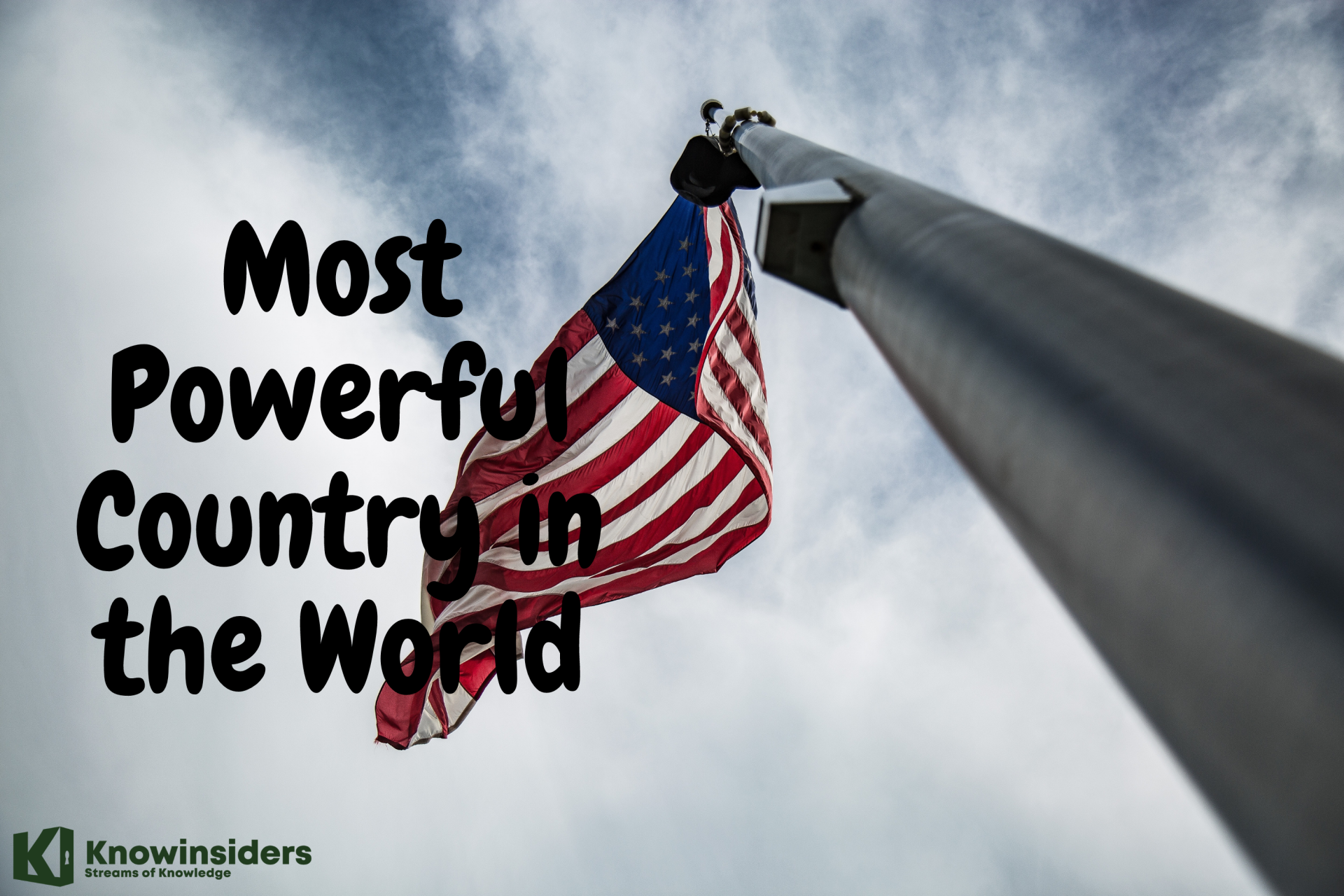 Which Country Is The Most Powerful In The World? Which Country Is The Most Powerful In The World? Defining the world’s most powerful countries is not always clear-cut and can be subjective. The most powerful nations are the ones that shape global ... |
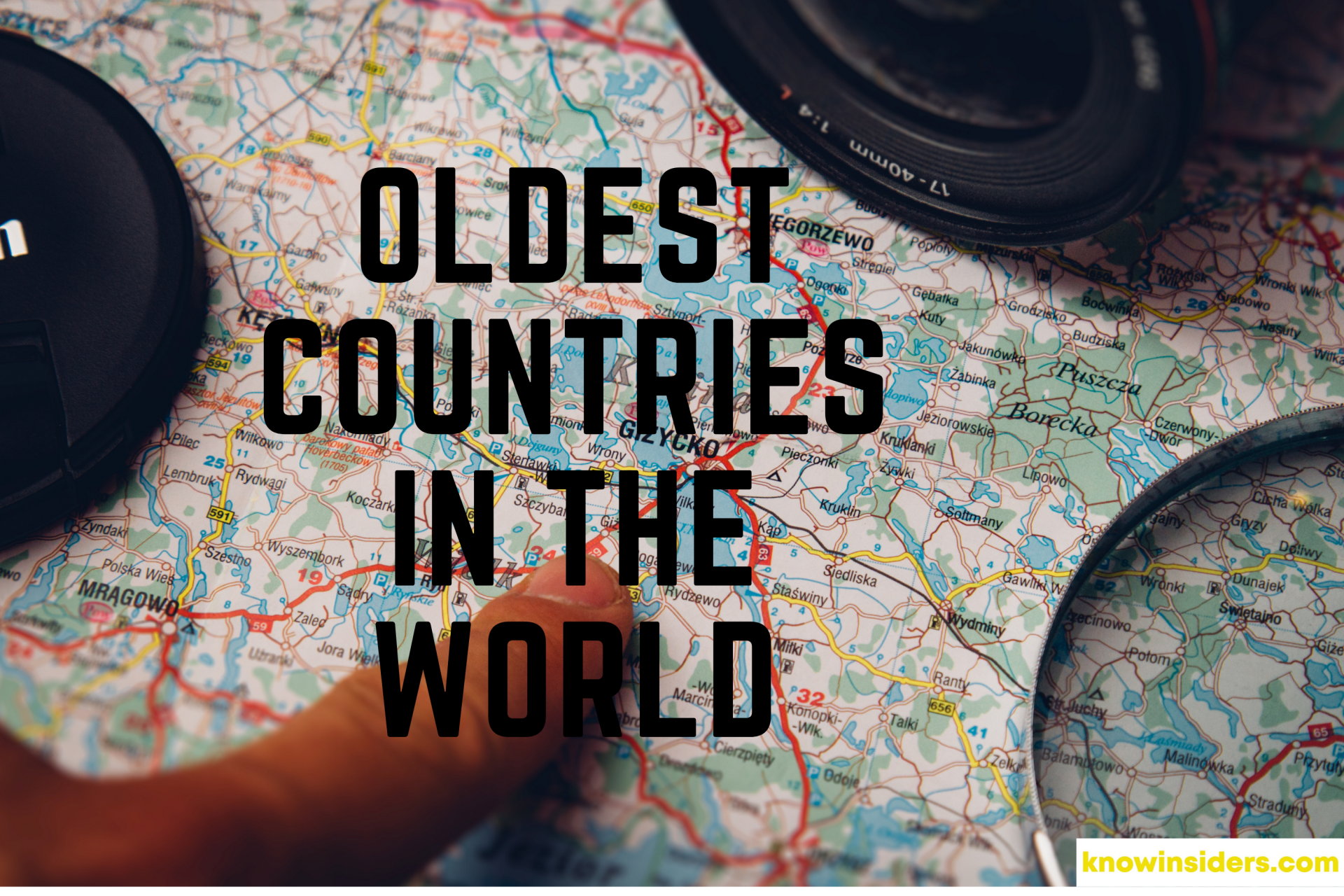 What Is The Oldest Country In The World? What Is The Oldest Country In The World? Let’s find out interesting facts about 9 oldest countries in the world! |
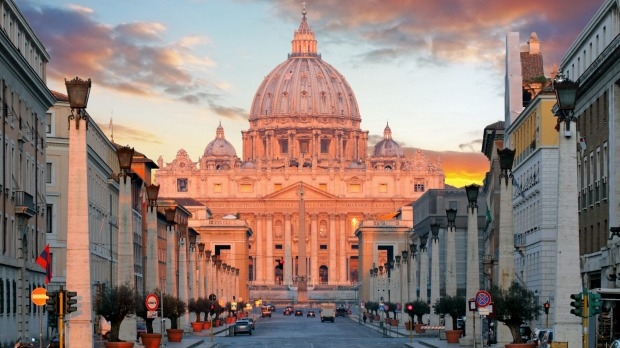 Which Country is The Smallest in the World? Which Country is The Smallest in the World? The smallest country in the world has the area of only 44 hectares. What country is that: Population, Territory, Interesting Facts and Figures? Find ... |


























